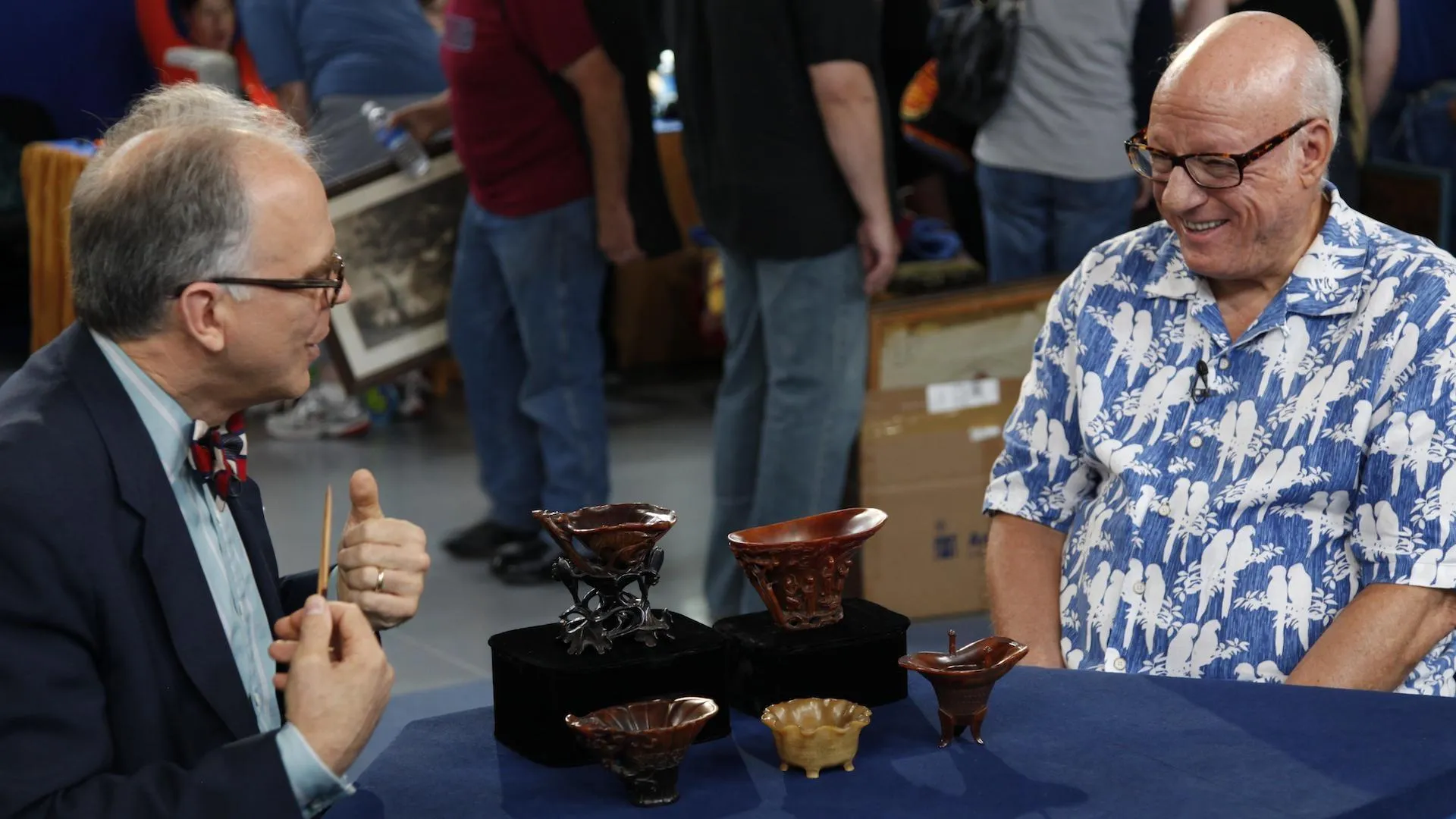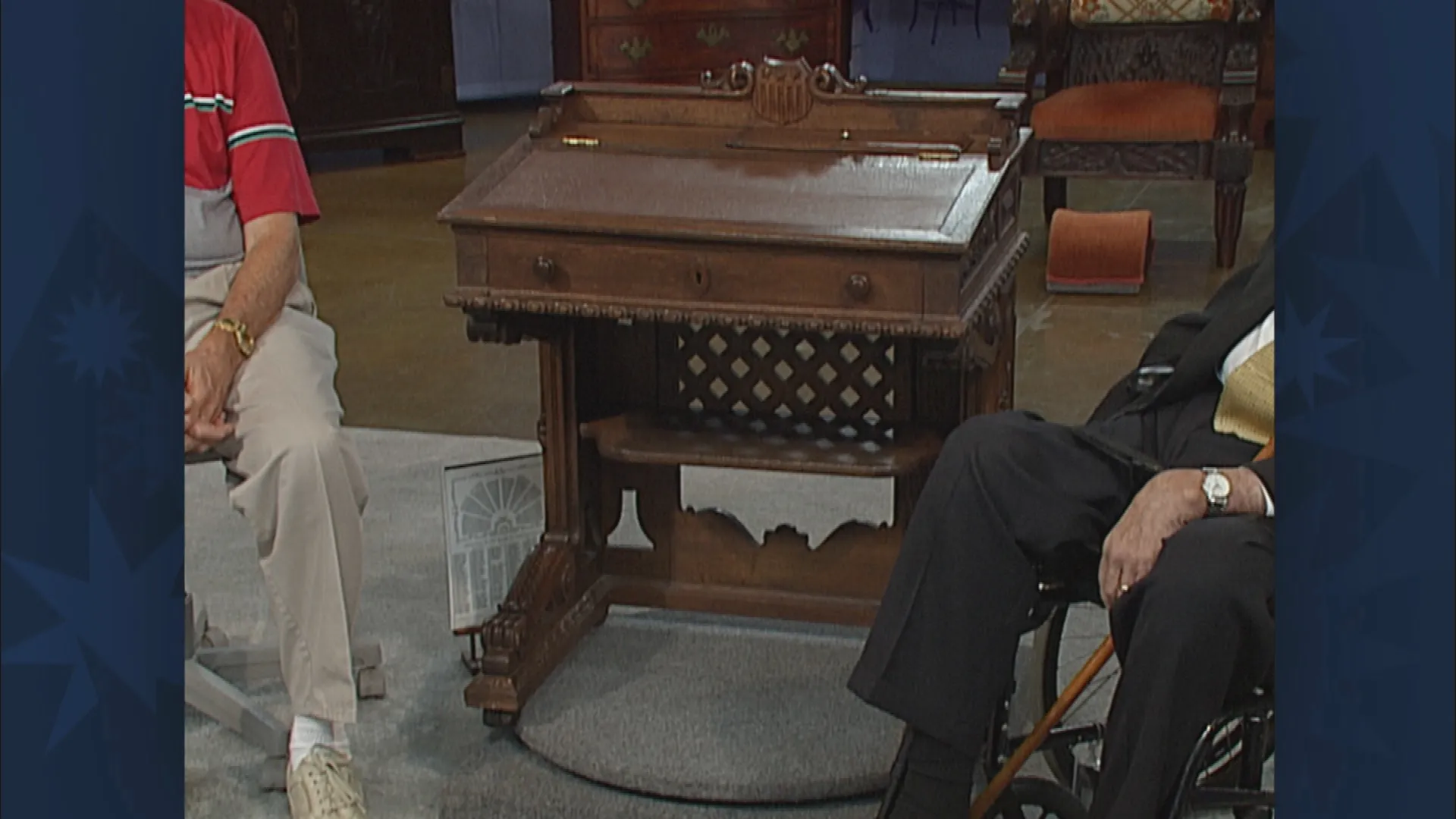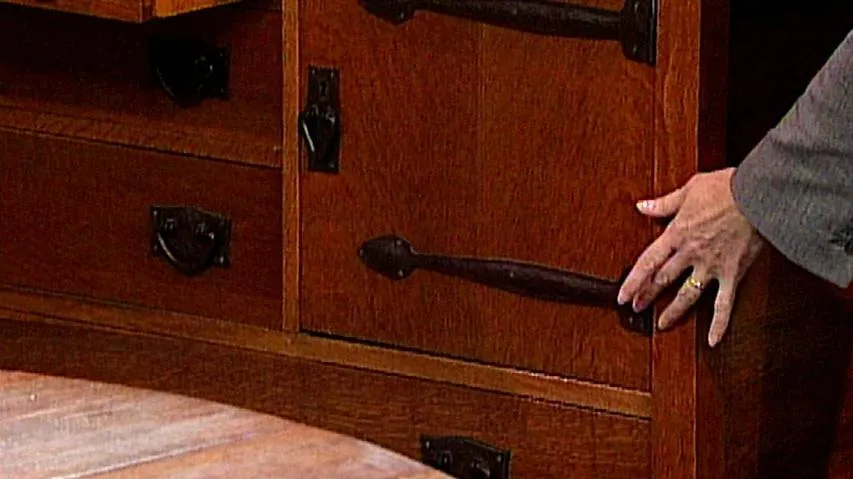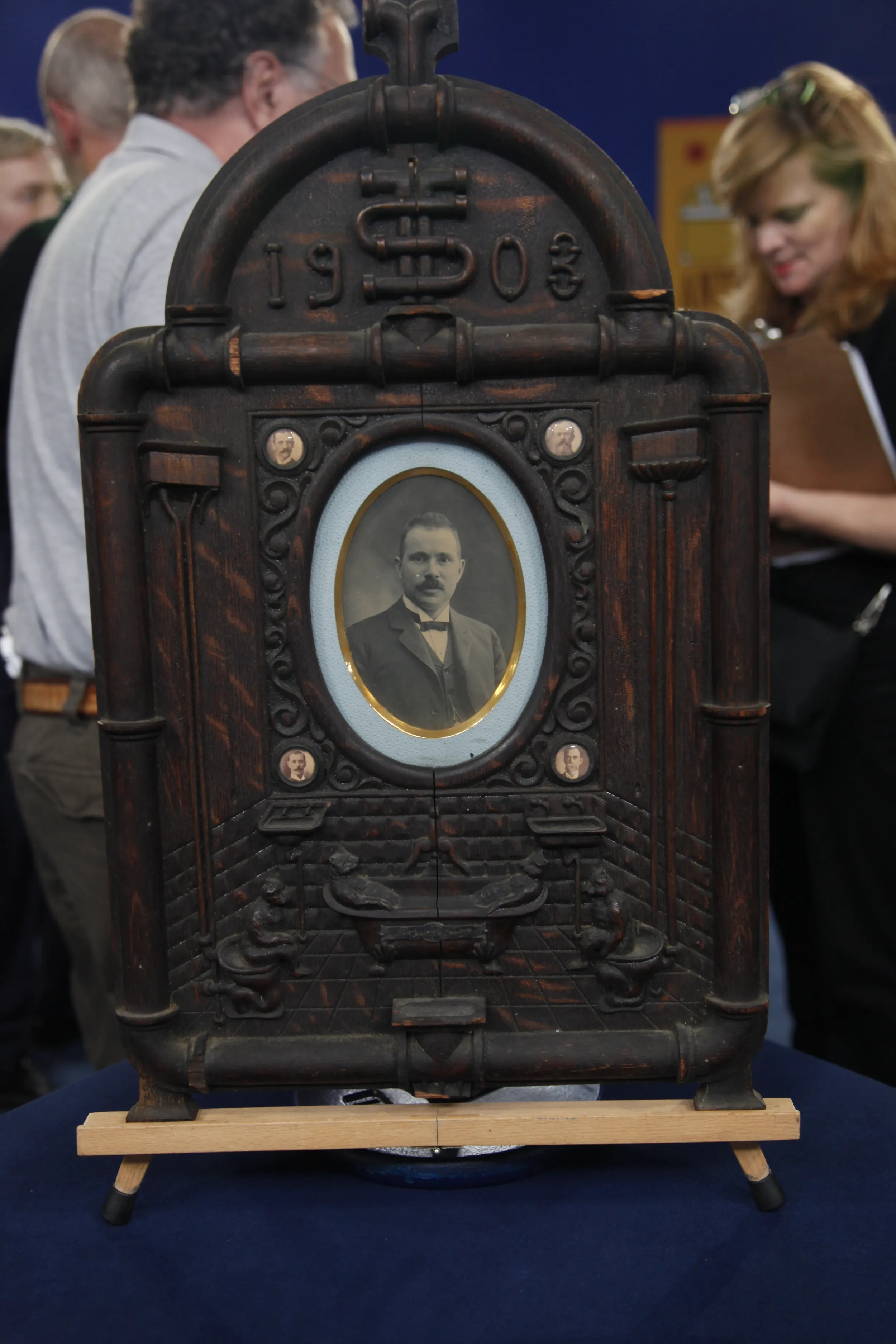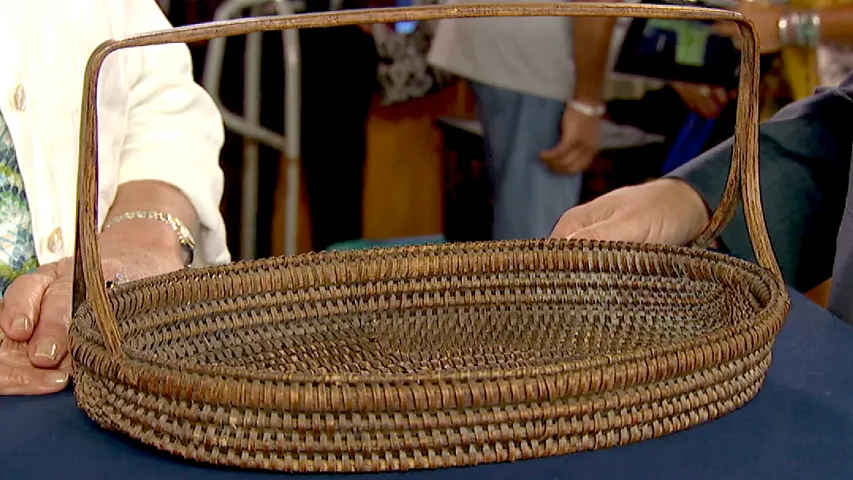GUEST: We built this farmhouse 132 years ago, and the family has been in it ever since.
APPRAISER: And where is that?
GUEST: Independence, Kansas. And this was hanging on the wall. My mom and dad were remodeling the house. They took it off the wall. It was painted white, and they were going to throw it away. And a friend of ours saw a tag on the back of it and did some investigation in it and his dad was a professional furniture refinisher, and so they had it refinished and hang it back on the wall and that's where it's been ever since.
APPRAISER: Well, I'm pretty glad that you didn't throw it away. This is model 903 plate rack. It was designed in 1901 to go on the wall and display porcelain or pottery plates. It does have a label on the back, it's a red label. It's a label for Gustav Stickley. Stickley and his brother set up shop in New York State at the end of the 19th century and are pretty much the most well-known proponents of the American Arts and Crafts movement.
GUEST: Yeah?
APPRAISER: They made a great deal of furniture in this style, very simple, minimal furniture for middle-class folks, and they experimented with different things. Some of these flourishes, like this subtle arch, are areas where he's sort of experimenting and finding the style which made him famous. And so what you have is a piece that's sort of in a transitional state for his career and is very rare. When you take the paint off, you get this really lovely finish of the oak, really warm. Now, the finish itself, which is really critical with these... on this, it could be improved. The gentleman who did this probably hasn't seen or worked with a lot of this type of furniture, so he put a higher polish on and it's changed the coloring a little and the depth and the finish overall. But what you have is a great and very rare model for Stickley, which is very sought after by collectors all over. Now, has it been appraised before?
GUEST: No.
APPRAISER: Do you have any idea?
GUEST: No.
APPRAISER: Right now, in this condition, it would probably bring, at auction, between $4,000 and $6,000.
GUEST: Oh, yeah?
APPRAISER: Yeah.
GUEST: Great.
APPRAISER: Now, if the condition were improved upon, put in more of an original state, it could bring as much as $10,000 to $20,000 to a good collector.
GUEST: Oh, really?
APPRAISER: Yeah.
GUEST: If this was improved on?
APPRAISER: Yes, sir.
GUEST: Oh, yeah?
APPRAISER: Yeah.
GUEST: Okay!
APPRAISER: So I'm glad you didn't throw it away.
GUEST: Nobody's going to buy it anyway. It's going to stay right where it was. We've got a bunch of 100-year-old plates that sit across the top of it, and they'll go right back on it.
APPRAISER: That's perfect.

